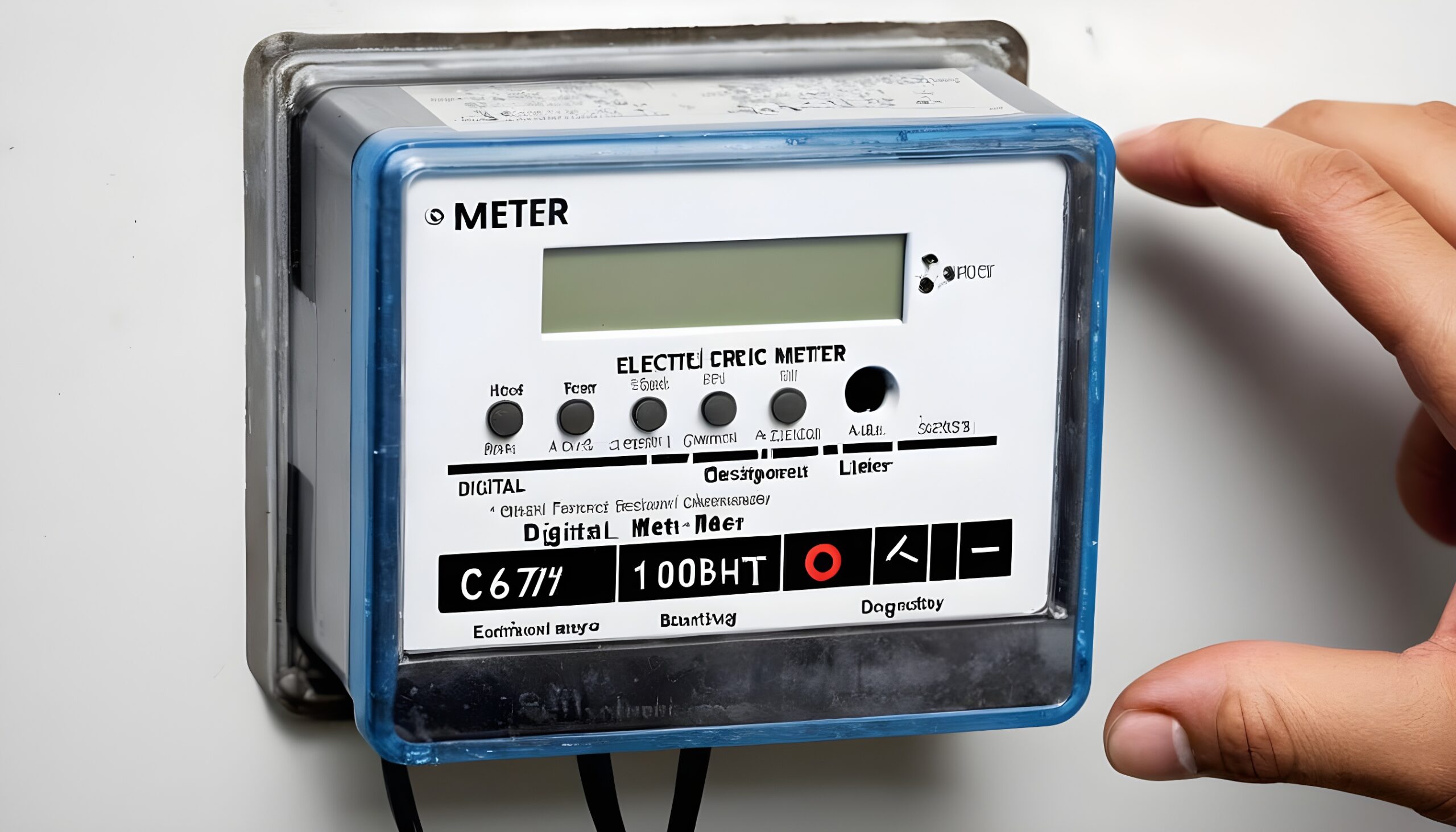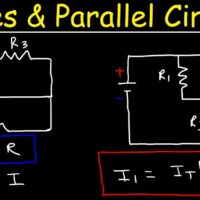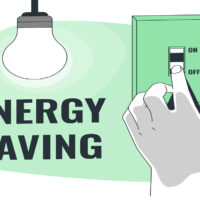A digital electric meter measures electricity usage by recording the current and voltage through an electronic circuit. It displays the data in a digital format for easy reading and monitoring.
Digital electric meters have revolutionized how we track energy consumption. They work by employing sensors and analog-to-digital converters to translate the electrical current flowing into your home into digital data. This information is crucial for both homeowners and energy suppliers, enabling precise billing and efficient energy use monitoring.
The integration of modern digital electric meters into smart grids also allows for advanced features like real-time data analysis and remote reading capabilities, streamlining the process for consumers and utility companies alike. By offering a transparent overview of electrical usage, these meters empower users to manage their consumption effectively, potentially leading to cost savings and a reduced environmental footprint.
Introduction To Digital Electric Meters
Digital electric meters are modern energy devices. They track electricity usage with precision. Unlike older models, these meters show real-time data. Every home and business is switching to them. They are easy to read and accurate.

The Shift From Analog To Digital
A big change is happening in how we measure electricity. Homes are upgrading from old, spinning-dial meters to new digital ones. These meters have screens that show your power use. They send this info to your power company.
Basic Functions Of A Digital Electric Meter
- Measure Current Flow: They record the electricity used in kilowatt-hours (kWh).
- Display Information: They have an LCD screen showing usage numbers.
- Communicate Data: They send usage data to the power company remotely.
Anatomy Of A Digital Electric Meter
Gone are the days of analog dials and manual readings. Digital electric meters mark a quantum leap in tracking energy consumption. Every digital meter’s design serves a precise function. It records electricity usage better than old meters. Let’s dive into its internal structure and understand its components.
Key Components And Sensors
Digital electric meters consist of several essential parts. Below we explore the main components:
- Microprocessor: This is the meter’s brain. It processes data from sensors.
- Memory: It stores energy usage and history.
- Kilowatt-hour Sensor: This monitors power consumption.
- Tamper Sensor: This detects any security breaches.
Each part works together to record and calculate energy use.
The Display Panel And User Interface
The display panel and user interface allow you to interact with the meter:
- Digital Display: Shows the amount of electricity being used.
- Buttons: Let users navigate through different functions.
- Indicator Lights: Indicate the meter’s operating status.
Understanding the digital meter helps ensure accurate tracking and better energy management.
Principles Behind Electricity Measurement
Understanding how a digital electric meter measures electricity usage is key to managing energy costs effectively. At its core, these meters operate on certain principles that efficiently track consumption over time. Let’s explore the main components of measurement.
Voltage
Voltage is the pressure from an electric circuit’s power source that pushes charged electrons through a conducting loop, enabling them to do work, such as powering appliances. Digital electric meters measure the voltage in a circuit, which is essential for calculating power usage.
Current
The current, measured in amperes, reflects how many electrons are flowing through the electric circuit per second. The meter monitors this flow to determine how much current is being used at any given time.
Power Calculation
The meter calculates power by multiplying the voltage by the current. This result, measured in watts, shows the rate at which energy is used. Meters then multiply this by the time electricity is used to give a reading in kilowatt-hours (kWh), the standard unit for billing.
Time-of-use Data Collection
Modern digital electric meters can record usage over specific periods. This Time-of-Use data lets utilities charge different rates at peak and off-peak hours. These meters log detailed consumption patterns, allowing for more accurate billing and encouraging energy conservation.
- Meters note high- and low-usage times
- They encourage efficient energy use
- Consumers can save money by using power during off-peak times
The principles behind these meters pave the way for better energy management and cost savings.
Metering Technologies In Use
The realm of digital electric meters is vast and intricate. These devices form the backbone of modern electricity management systems. Digital electric meters have revolutionized the way we monitor power consumption. They use sophisticated technology to provide precise readings. Understanding these meters entails exploring the various technologies they employ.
Analog-to-digital Conversion
Digital electric meters convert analog signals into digital data. Why does this matter? It allows for accurate and efficient electricity usage tracking. Analog-to-digital conversion occurs through several steps:
- Sensing the analog voltage or current.
- Transforming the sensed analog signal into a digital signal.
- Conducting this conversion at consistent intervals for real-time tracking.
This technology makes sure electric utility providers receive precise data. They can bill consumers fairly and efficiently.
Data Processing And Storage
Once the conversion from analog to digital is complete, the meter processes this digital data. Data processing involves several key activities:
- Compiling the consumption data over time.
- Analyzing usage patterns for optimized billing cycles.
- Identifying anomalies or potential issues in power usage.
Furthermore, the meter must store this data securely. Digital meters often come equipped with built-in memory components. These retain historical consumption data. The stored data can be transmitted remotely for detailed analysis.
Communications And Smart Features
Today’s digital electric meters are more than simple devices for measuring energy use. They come packed with smart features. These involve complex communications systems. They connect our homes to the broader smart grid. Let’s explore the amazing capabilities of these high-tech wonders.
Wireless And Wired Data Transmission
Smart meters communicate through two main ways: wireless and wired connections. The wireless method uses radio waves. These waves transfer data directly to the utility company. This makes reading meters fast and accurate. Wired transmission, on the other hand, uses physical cables. This method is often seen in older setups or where wireless signals are weak.
The wireless option often uses Wi-Fi, cellular networks, or RF mesh networks. These connect to a data collector. Then, they send the information to the utility provider. Both methods ensure your energy usage gets monitored in real-time. This helps in seamless billing and energy management.
Integration With Smart Grid Systems
Smart meters do not stand alone. They integrate with smart grid systems. This allows them to do amazing things. This includes:
- Real-time energy tracking – You see how much energy you use. You can adjust to save money.
- Demand response – Your meter can respond to the grid’s needs. You save energy during peak hours.
- Outage notification – The grid knows if you lose power. This helps restore it faster.
- Remote service control – Your provider can turn services on or off without a visit.
These smart features provide valuable data. They help keep the energy grid stable. They also allow for better customer service. Plus, they make our energy system more efficient. With these advanced systems, managing power is now more advanced than ever.
Accuracy And Calibration
The efficiency and reliability of digital electric meters hinge on their accuracy and calibration. These devices measure the electricity used by households and businesses. For fair billing and energy management, they must provide precise readings consistently. This section delves into the processes ensuring these meters meet the highest accuracy standards.
Testing Methods
Digital electric meters undergo rigorous testing to ensure accuracy. Utilities often employ two key methods:
- Field Testing – Technicians test meters on-site using portable equipment.
- Bench Testing – Meters face lab inspections against controlled power sources.
These tests measure a meter’s performance over various loads and conditions. This checks their efficiency in real-world scenarios.
Standards And Certifications
Standards ensure meters perform well over time. Policies like the International Electrotechnical Commission (IEC) and the National Institute of Standards and Technology (NIST) guide their manufacturing and testing.
| Meter Type | Standard | Region |
|---|---|---|
| Residential | IEC 62052-11 | Global |
| Commercial | ANSI C12.20 | USA |
Certifications confirm that meters match industry benchmarks. A meter with certification from reputable bodies is trusted for its precision and functionality.
End-user Interaction With Digital Meters
Digital electric meters have transformed how end-users engage with their energy consumption. These advanced gadgets offer detailed data and empower users to make informed decisions. Learning to navigate digital meters adds control over utility costs.
Reading And Interpreting Data
Understanding your digital meter is straightforward. The digital display presents energy usage in kilowatt-hours (kWh). To read your consumption:
- Locate the digital interface on your meter.
- Observe the displayed numbers.
- Note down the kWh for your records.
Some digital meters provide real-time data and historical usage patterns. This visual breakdown aids in identifying peak usage times.
Managing Consumption And Cost
With digital meters, users gain access to tools that support better energy management. Here’s how:
- Track your usage over specific periods to spot trends.
- Set consumption goals based on the data shown.
- Adjust appliance use to avoid high-usage periods.
- Evaluate the impacts of energy-saving measures in real time.
Implementing these steps helps in reducing monthly expenses. Your digital meter becomes a partner in managing your home’s energy use.
Security And Privacy Concerns
With the shift to digital electric meters, security and privacy concerns are more important than ever. These meters, also known as smart meters, collect detailed energy usage data. This sensitive information must stay protected to ensure customer trust and system integrity.
Data Encryption And Cybersecurity
Digital meters send data to utility companies for monitoring and billing. Encrypting this data is crucial. It protects against unauthorized access during transmission. Cybersecurity measures, like firewalls and intrusion detection systems, also defend against hacking attempts. Meters must have up-to-date security protocols to address any vulnerabilities.
- End-to-end encryption: Scrambles data so only intended recipients can read it.
- Secure authentication: Confirms the identity of devices and users.
- Regular updates: Keeps security measures ahead of potential hackers.
User Privacy And Data Access
User privacy is another significant concern. Individuals deserve control over who views their energy usage data. Laws and policies must safeguard this information. Clear consent mechanisms should be in place for sharing data with third parties.
| User Rights | Data Management |
|---|---|
| Access to personal usage data | Limited and controlled data sharing |
| Option to opt out of data collection | Secure storage with access logs |
| Transparency about data use | Deletion of data upon request |
Utility providers bear the responsibility to maintain strict access control systems. Users should have easy access to their data without exposing it to external threats. Regular audits and compliance checks ensure that privacy practices meet established standards.
Future Developments In Metering Technology
Electric meters are going through exciting changes. Future developments in metering technology promise to make power usage easier to manage. Keeping track of electricity will soon be smarter, quicker, and more efficient. Let’s explore what’s on the horizon.
Innovations On The Horizon
Technology never stands still, and electric meters are no exception. Smart meters are getting even smarter. Here are the innovations coming soon:
- Real-time data tracking – See power use instantly.
- Remote updates – Meters upgrade without a technician.
- Enhanced user interfaces – Control easily from a smartphone.
- Integration with home assistants – Use voice commands for data.
Implications For Energy Efficiency And Conservation
New metering technology means saving energy and money. It helps the Earth too. Check out the impacts:
| Feature | Impact |
|---|---|
| Predictive Usage Patterns | Helps plan energy use better. |
| Leak Detection | Finds wasted power fast. |
| Demand-response Programs | Shifts use to off-peak hours. |
| Renewable Energy Integration | Connects easily to green sources. |
Frequently Asked Questions For How Digital Electric Meter Works
How Does A Digital Electric Meter Function?
Digital electric meters measure energy consumption by recording the current and voltage through circuits over time. They use solid-state electronics and a digital display to show the amount of electricity used, typically reported in kilowatt-hours (kWh).
What Are The Advantages Of Digital Electric Meters?
Digital electric meters offer higher accuracy, detailed energy usage data, and remote reading capabilities. They enable utilities to monitor consumption real-time and help consumers track their power usage for better energy management.
Can Digital Electric Meters Be Read Remotely?
Yes, many digital electric meters can be read remotely using smart metering technology. This allows utility companies to collect energy usage data without manual meter readings, facilitating efficient billing and energy management.
Do Digital Electric Meters Support, Time-of-use Billing?
Digital electric meters are capable of supporting time-of-use billing by recording when electricity is consumed. This allows utilities to charge variable rates based on peak and off-peak hours, promoting energy conservation.
Conclusion
Understanding the workings of digital electric meters is key to appreciating our energy consumption. These devices offer accuracy and detailed usage data, fostering smarter energy choices. As consumers become more energy-conscious, knowledge of digital metering proves invaluable. Remember, staying informed is the first step to efficiency.
Embrace this technology for a greener tomorrow.




